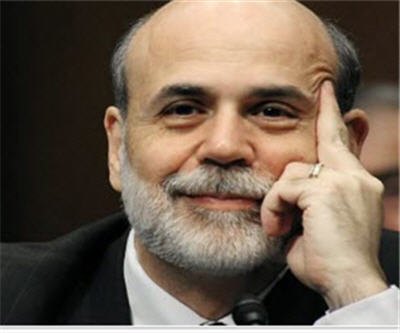Gold price swings wildly after Fed’s surprise taper

The gold price fell on Wednesday, after a decision by the US Federal Reserve to start tapering asset purchases under its economic stimulus program.
On the Comex division of the New York Mercantile Exchange, gold futures for February delivery were swinging wildly as investors digested the news.
Just after the announcement gold dropped $20 an ounce to $1,220 before recovering to around $1,235, up slightly from yesterday close.
But by late afternoon selling pressure returned to the market with the spot price of gold tumbling to a $1,216.90 an ounce, a two-week low.
The Federal Open Market Committee surprised the market and announced a modest of $10 billion reduction of the $85 billion a month purchases under its quantitative easing program that has pumped $4 trillion of easy money into the US economy.
While the cuts to the QE program is negative for the gold price the Fed took away with one hand and gave with the other:
The Fed said in a statement at its last meeting for the year and under the chairmanship of Ben Bernanke that QE would be reduced in “further measured steps at future meetings,” but will remain dependent on economic data.
Interest rates will be kept near zero “well past the time that the unemployment rate declines below 6.5%,” especially if inflation remains below the bank’s targeted rate of 2%, i.e. near the end of 2015.
Bernanke in the press conference after the announcement also reiterated that today’s decision “should not be seen a tightening.”
The Fed has been reviewing QE for many months and was eager to start winding down the program on signs of a stronger recovery in the US, but most economists had expected that the money printing presses would only be slowed down in March when incoming chair Janet Yellen, a strong supporter of QE, has had time to make her mark.
The US has not been alone in printing money and together with the Bank of Japan, the European Central Bank and the Bank of England, more than $10 trillion of easy money is now sloshing around in the system.
Monetary expansion, particularly since the financial crisis, has been a massive boon for the gold price. Gold was trading around $830 an ounce before Chairman Ben Bernanke announced Q1 in November 2008.
Gold and the US dollar usually moves in the opposite directions and gold’s perceived status as a hedge against inflation is also burnished when central banks flood markets with money.
The price of gold is down some 26% in 2013 – the worst annual performance since 1980 – in anticipation of an end to the ultra-loose monetary policy.
The metal is set to break its 12-year bull run that took it from $271.10 on January 2, 2001 to today’s trading level of $1,230 an ounce.
Image courtesy of University of Michigan Ford School
{{ commodity.name }}
{{ post.title }}
{{ post.date }}





2 Comments
Michael Hall
Buy Gold
Thomas
Makes no sense why gold is so tied to this ‘taper’. So the fact that the Fed has pumped $4T of funny money into the US economy doesn’t matter one bit. The house of cards can’t stand forever.